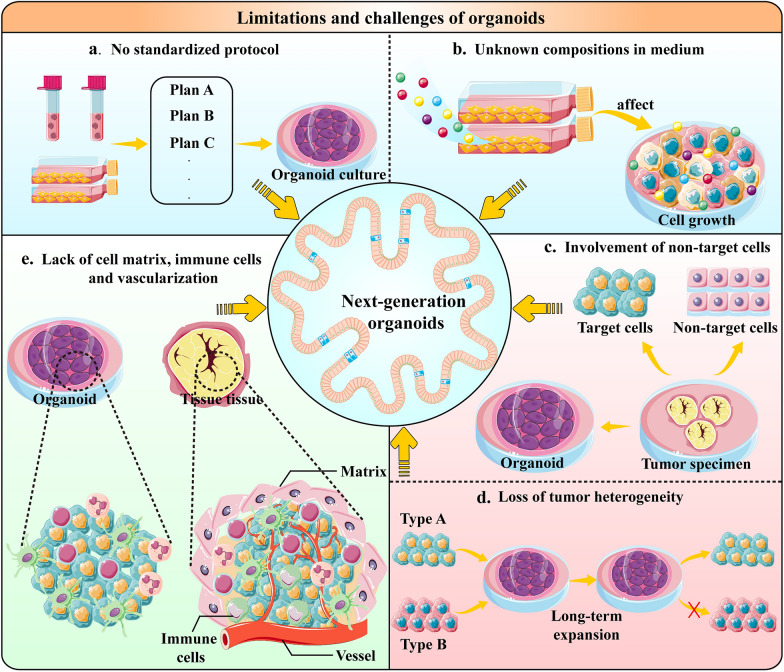Fig.5.
Limitations and challenges of organoids. a, b Extensive work across the scientific community is required to standardize the multiple steps involved in culturing organoids. Some exogenous additives in media may have potential effects on culturing organoids, leading to low efficiency and a short lifespan of organoid cultures. c, d The tumour specimens resected during surgery are often mixed with normal tissue cells. Therefore, the organoids established using them are likely to be contaminated with benign cells. It is yet to be determined if a loss of intertumoral heterogeneity in cancer organoids could occur upon long-term expansion. Considering these problems, organoids cannot accurately reflect the cancer characteristics, leading to inaccurate drug screening results. e Current organoid models still lack an intact tumour microenvironment, such as stromal cells, vascular endothelial cells and immune cells. Therefore, better co-culture systems need to be developed to reflect extracellular matrix, cell–matrix and cell-to-cell interactions

